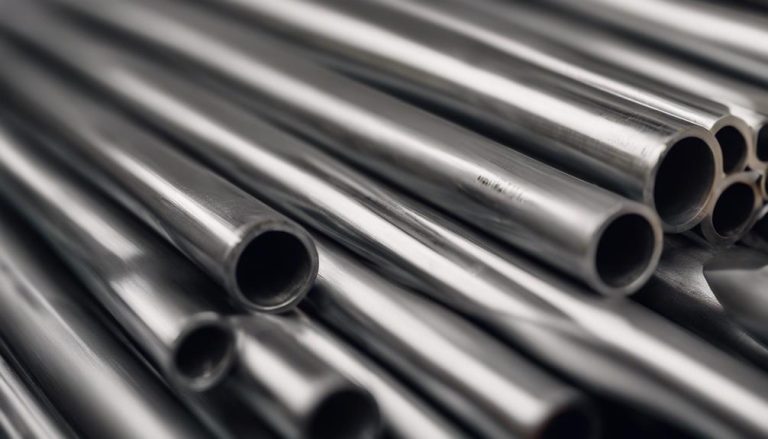
Exploring the Versatility and Durability of Stainless Steel Tubes
Stainless steel tubes are essential in industries for their unmatched corrosion resistance. They are favored in automotive, aerospace, architectural, and construction projects due to their high tensile strength and durability in extreme conditions. Their exceptional weather resistance against rain, snow, UV rays, and temperature fluctuations guarantees longevity and safety. These tubes boast high tensile and yield strength properties, remaining reliable in high-pressure environments. If you want to discover more about the fabrication techniques, aesthetic appeal, and various applications of stainless steel tubes, the detailed research provides in-depth insights into their versatile and durable nature.
Key Takeaways
- Stainless steel tubes offer unmatched corrosion resistance and structural reliability.
- They exhibit high tensile strength, yield strength, and toughness for durability.
- Fabrication techniques like welding and bending allow for customized designs to meet industry needs.
- Their aesthetic appeal enhances structures with a sleek, modern, and timeless look.
- Stainless steel tubes provide exceptional weather resistance, strength, and durability for diverse applications.
Industrial Applications of Stainless Steel Tubes
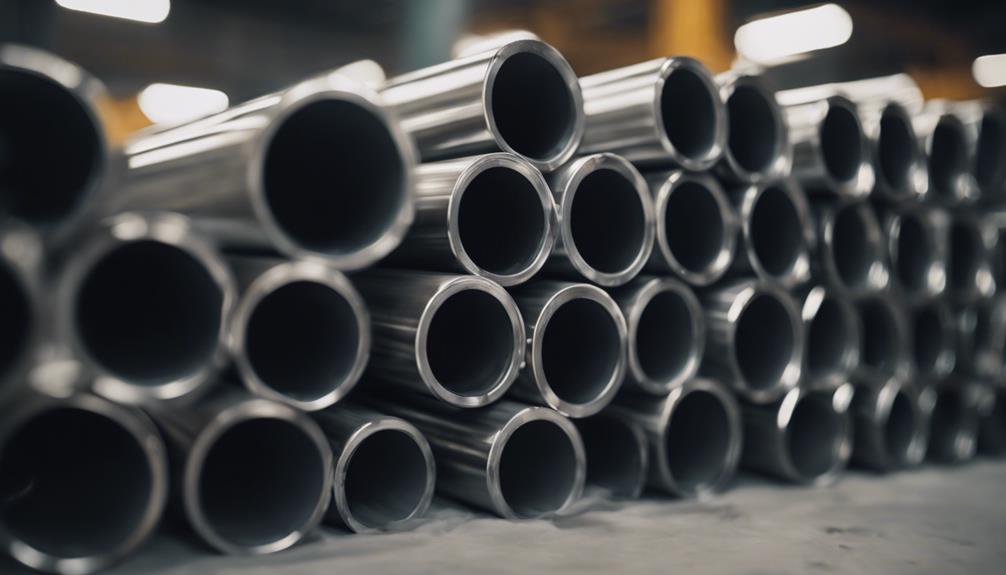
Stainless steel tubes play an essential role in various industrial sectors, providing unmatched corrosion resistance and structural reliability in piping systems. Stainless steel tube manufacturers cater to a wide array of industrial applications, meeting the demands of sectors such as automotive, aerospace, architecture, construction, chemical processing, oil refining, and power generation.
In the automotive and aerospace industries, stainless steel tubes are favored for their high tensile strength and durability, ensuring the integrity of critical systems. Architectural and construction projects benefit from stainless steel tubes’ ability to withstand extreme conditions while maintaining structural integrity, making them a popular choice for structural frameworks and handrails.
Additionally, in chemical processing plants, oil refineries, and power generation facilities, these tubes are essential due to their corrosion resistance and reliability, ensuring the safety and efficiency of operations. The versatility and durability of stainless steel tubes make them indispensable components in various industrial applications where performance and longevity are paramount.
Features of Stainless Steel Tubes
Renowned for their exceptional resistance to corrosion and structural reliability, stainless steel tubes boast a range of features that make them highly sought after in various industries. Unlike mild steel tubes, stainless steel tubes offer superior corrosion resistance, making them well-suited for harsh environments prevalent in industries such as chemical processing and marine applications.
The formation of a protective oxide layer on stainless steel tubes helps prevent rust and corrosion, ensuring long-term durability and reliability in diverse applications. Additionally, stainless steel tubes exhibit high tensile strength, yield strength, and toughness, maintaining their structural integrity even under extreme conditions. Their excellent formability allows for easy shaping and fabrication, enhancing versatility for precision engineering and construction projects.
Due to these features, stainless steel tubes play a pivotal role in industrial piping systems, automotive manufacturing, and structural frameworks where strength, durability, and corrosion resistance are paramount.
Fabrication Techniques for Stainless Steel Tubes
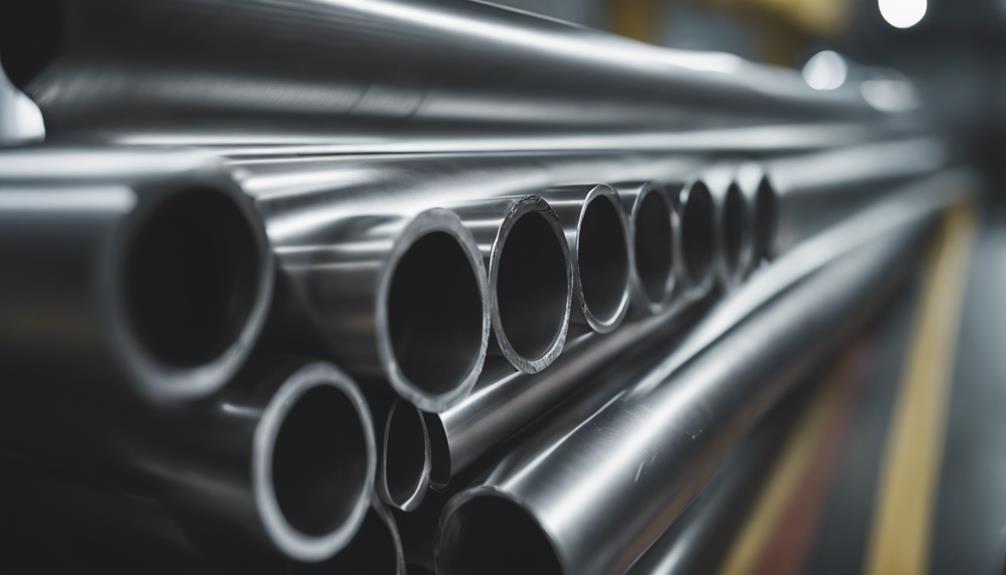
Utilizing advanced fabrication techniques, stainless steel tubes are meticulously crafted to meet stringent industry standards for strength, durability, and precision. These tubes undergo processes such as extrusion, where a solid billet is pushed through a die to create seamless tubes without welding seams. The extrusion method results in superior strength, corrosion resistance, and a smooth surface finish ideal for various applications.
In addition to seamless tubes, welded stainless steel tubes are also prevalent, fabricated using techniques like TIG or laser welding. These welding methods guarantee the tubes’ strength and durability, making them suitable for high-pressure environments. Fabrication processes for stainless steel tubes extend beyond welding to include bending, cutting, and shaping, enabling the customization of tube sizes and designs to meet specific industry needs.
Aesthetic Appeal of Stainless Steel Tubes
With their visually striking presence, stainless steel tubes effortlessly enhance the aesthetic appeal of structures and equipment across various industries. The sleek and modern look they offer adds a touch of sophistication to architectural designs.
The smooth and polished surface of stainless steel tubes elevates the visual appeal of structures, making them ideal for both functional and decorative purposes. The reflective nature of stainless steel not only provides a clean and elegant look but also complements both traditional and contemporary designs, making it a versatile choice for architects and designers.
The timeless and classic appearance of stainless steel tubes guarantees that they remain a popular option for enhancing the aesthetics of buildings and equipment. Whether used as handrails, decorative elements, or structural components, stainless steel tubes bring a sense of style and elegance to any project, making them a preferred choice for those seeking durability without compromising on aesthetics.
Weather Resistance of Stainless Steel Tubes
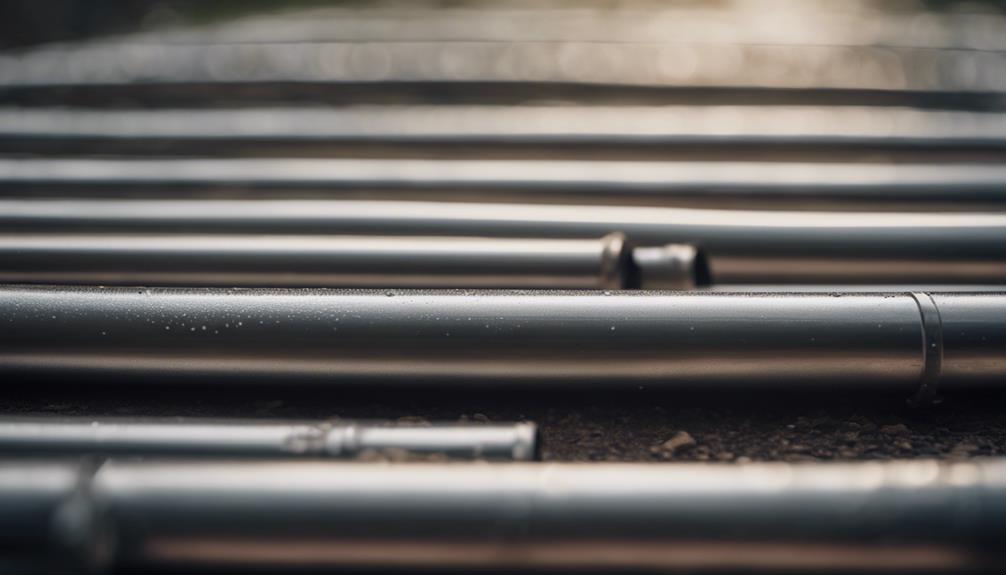
Exhibiting exceptional resilience against various weather elements, stainless steel tubes are renowned for their outstanding weather resistance capabilities. These tubes can endure exposure to rain, snow, UV rays, and temperature fluctuations without degrading, making them ideal for outdoor applications.
The corrosion-resistant properties of stainless steel guarantee longevity and structural integrity in diverse weather conditions, maintaining both appearance and performance in harsh climates and extreme weather environments. This weather resistance is essential for infrastructure projects, bridges, and building exteriors where durability and safety are paramount over time.
Stainless steel tubes’ ability to withstand the elements without compromising their strength or functionality makes them a reliable choice for applications requiring resilience in challenging weather conditions. Whether facing coastal salt sprays, heavy rains, or intense sunlight, stainless steel tubes prove their worth by offering lasting protection and stability, ensuring the longevity of structures and equipment in demanding outdoor settings.
Strength and Durability of Stainless Steel Tubes
Renowned for their exceptional strength and durability, stainless steel tubes are highly regarded for their ability to maintain structural integrity even in the most demanding conditions. These tubes boast high tensile and yield strength properties, ensuring they can withstand heavy loads and harsh environments without compromising their toughness. Their superior durability is further enhanced by their corrosion resistance, making them suitable for a wide range of applications, including those requiring resilience to extreme conditions.
Due to their lightweight nature and impressive durability, stainless steel tubes are a preferred choice across various industries. The long-term structural integrity they offer, combined with their ability to resist corrosion, makes them a reliable option for applications where strength and durability are paramount. Whether in challenging outdoor settings or high-pressure environments, stainless steel tubes continue to prove their worth by maintaining their robustness and reliability over time.
Options in Stainless Steel Tubing
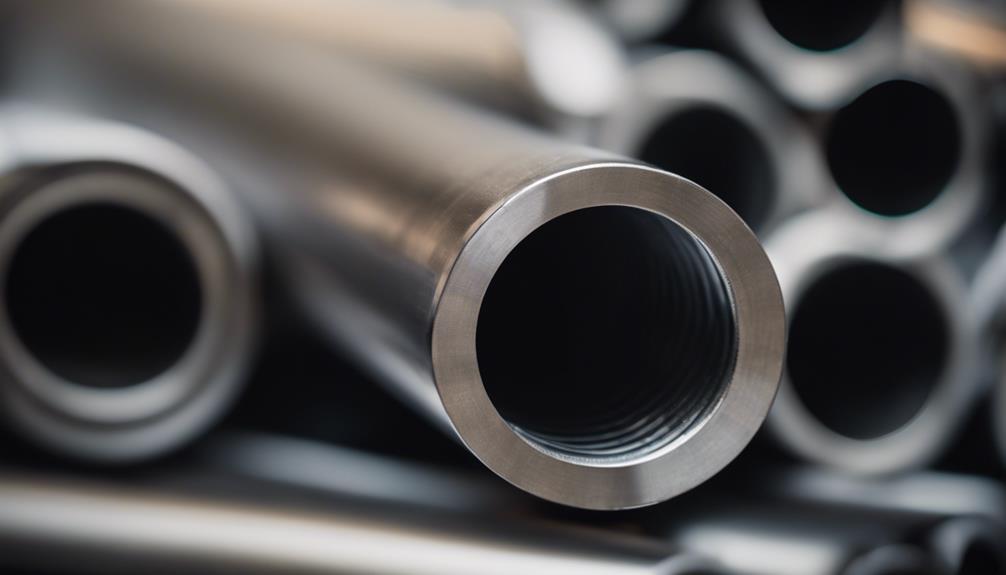
When exploring the domain of stainless steel tubing, an important aspect to consider is the variety of options available, each tailored to specific industry requirements and applications.
Stainless steel tubing options typically include Grade 304 and Grade 316, both well-known for their corrosion resistance and durability. Grade 304 stainless steel tubes, being non-magnetic, are well-suited for applications such as industrial piping systems and the automotive industry.
On the other hand, Grade 316 stainless steel tubes are preferred for their superior corrosion resistance, making them ideal for use in harsh environments like marine equipment and pharmaceutical manufacturing facilities.
Michigan Valve and Fitting can promptly fulfill custom orders for stainless steel tubing sizes and materials, ensuring that diverse industry needs are met.
The availability of different sizes, materials, and finishes in stainless steel tubing further underscores its versatility and durability, catering to a wide range of applications across various sectors.
Using DK-LOK Fittings With Stainless Steel Tubes
Boosting the reliability of stainless steel tubing systems, the integration of DK-LOK fittings guarantees leak-free connections and peak performance across diverse applications.
DK-LOK fittings are engineered with precision to guarantee reliability and durability in critical systems. Their high-quality materials and construction meet industry standards for safety and efficiency, making them a trusted choice for various industries.
The compatibility of DK-LOK fittings with Stainless Steel Tubes enhances system integrity, reducing the risk of leaks or failures. By utilizing DK-LOK fittings with stainless steel tubes, businesses can benefit from a cost-effective solution for long-term, reliable fluid and gas handling.
These fittings provide a secure connection that minimizes the potential for leaks, ensuring smooth operations and peace of mind. Overall, the use of DK-LOK fittings with stainless steel tubes offers a robust and dependable solution for a wide range of industrial applications.
Choosing the Right Stainless Steel Tubing
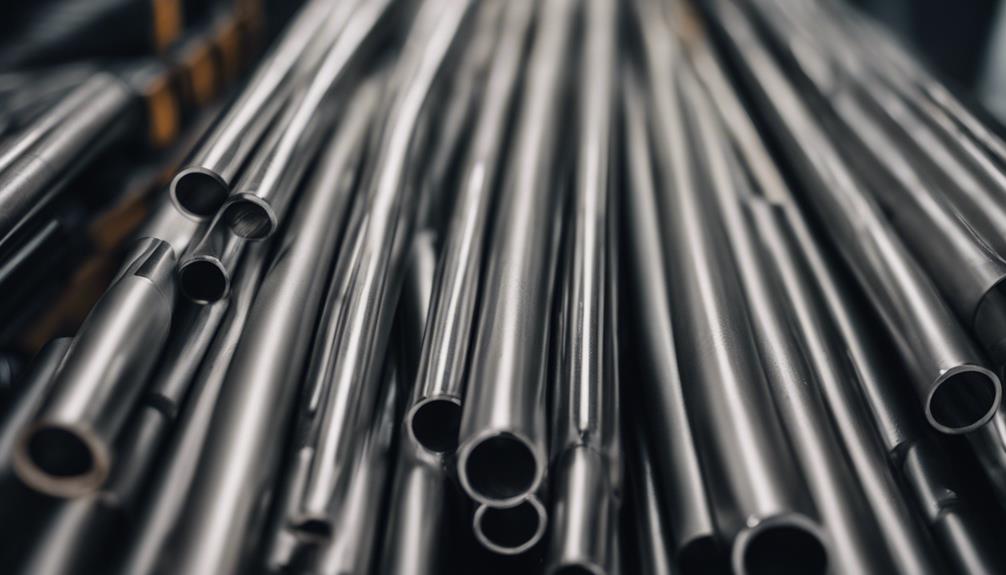
Selecting the appropriate stainless steel tubing is vital for ensuring excellent performance and longevity in a wide range of industrial applications. Stainless steel tubing is favored for its exceptional durability and corrosion resistance, making it a reliable choice for various industries. When choosing the right stainless steel tubing, factors such as temperature extremes, exposure to chemicals, and specific dimensions required for the intended application must be taken into account.
For leak-free and durable connections, DK-Lok fittings are recommended, offering high performance in different environments. Choosing the best outer diameter is essential to guarantee strength and performance in stainless steel tubing used across industries. With a variety of sizes, materials, and finishes available, stainless steel tubing can be tailored to meet specific industry needs and requirements.
Frequently Asked Questions
What Is the Durability of Stainless Steel?
Stainless steel exhibits exceptional durability due to its corrosion resistance, high load-bearing capacity, and longevity. It can withstand heavy loads, high pressures, and extreme temperatures, making it a reliable choice for industries requiring strength, resilience, and long-term performance.
What Are Stainless Steel Tubes?
Stainless steel tubes are hollow cylindrical structures crafted from stainless steel, renowned for their robustness and resilience. They serve as essential components across industries, offering corrosion resistance and high-temperature endurance. Available in various grades and forms, such as seamless or welded, they cater to diverse applications.
What Are the Benefits of Stainless Steel Tubing?
Stainless steel tubing offers exceptional benefits, including superior corrosion resistance, high tensile strength, and toughness. Its ability to form a protective oxide layer prevents rust, ensuring longevity. Additionally, the material’s formability allows for easy customization to meet specific requirements.
How to Measure a Stainless Steel Tube?
To measure a stainless steel tube accurately, use a caliper or micrometer to determine the outer diameter, measure wall thickness by gauging the inner and outer surfaces’ distance, and calculate length using a measuring tape. Adhere to industry tolerances for precise specifications.
Conclusion
To sum up, stainless steel tubes are highly versatile and durable, making them ideal for a wide range of industrial applications. Their weather resistance, strength, and aesthetic appeal make them a popular choice for various projects.
With the right fabrication techniques and fittings, stainless steel tubing offers long-lasting performance and reliability. It is important to carefully choose the right type of stainless steel tubing to guarantee excellent results in any application.
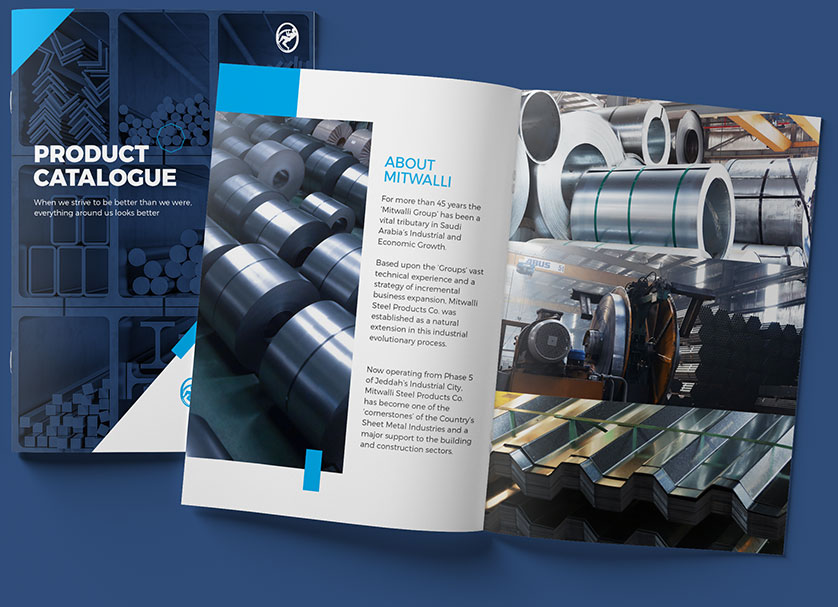
Add New Comment
Deprecated: File Theme without comments.php is deprecated since version 3.0.0 with no alternative available. Please include a comments.php template in your theme. in /home/wwwmsp/public_html/wp-includes/functions.php on line 6121